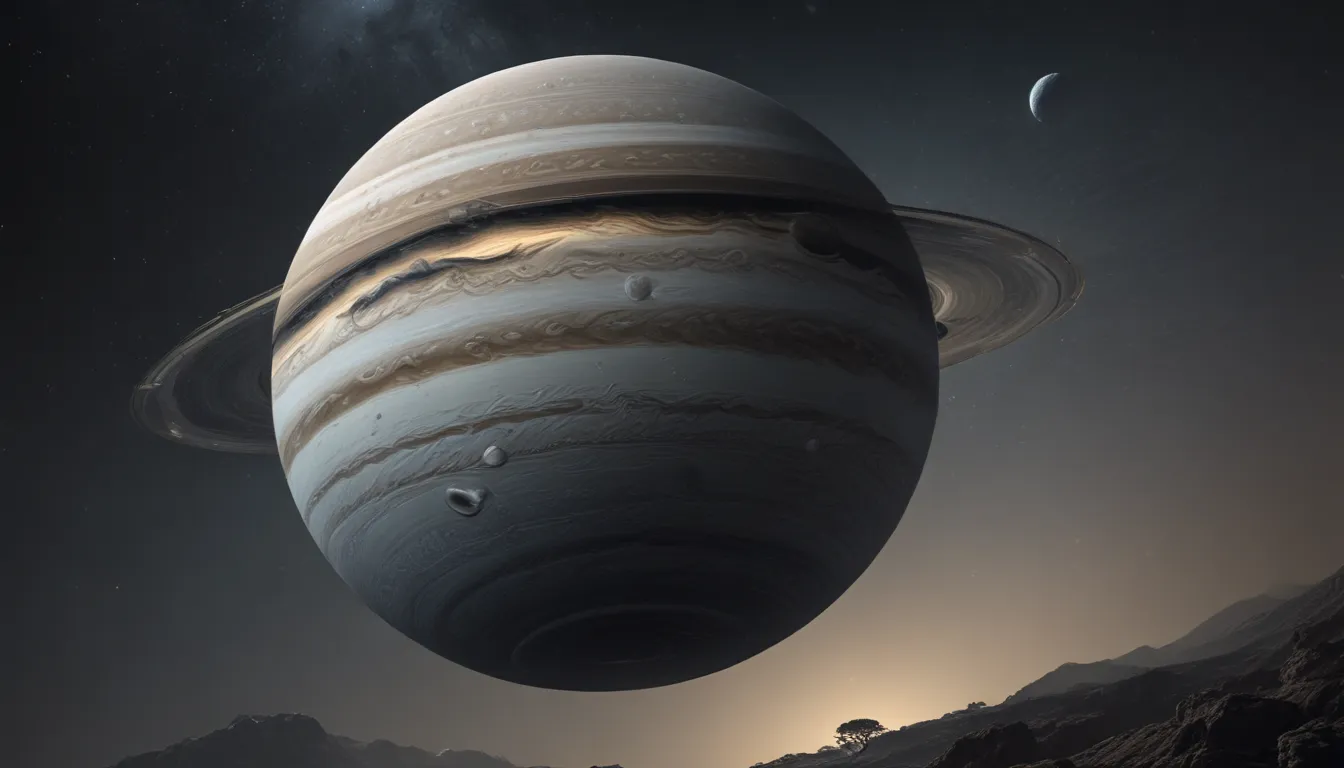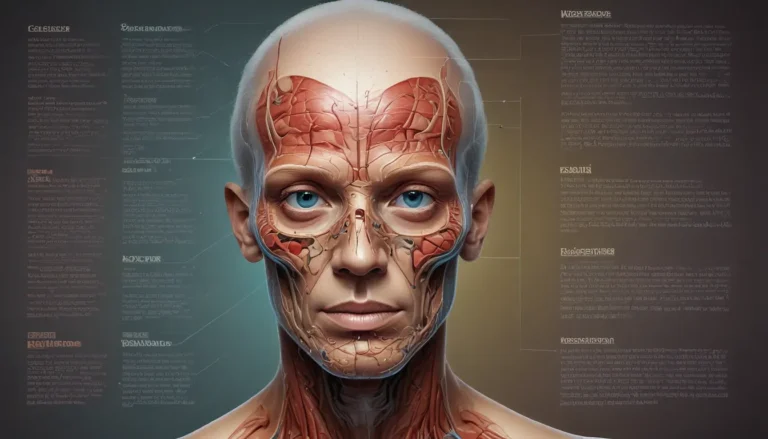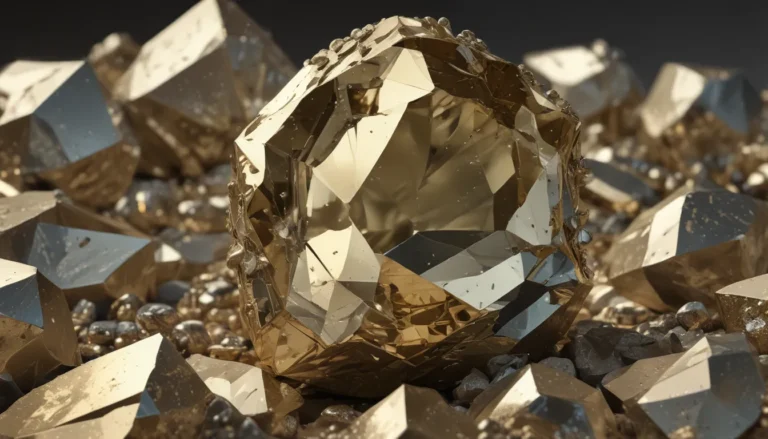A Note About Images: The images used in our articles are for illustration purposes only and may not exactly match the content. They are meant to engage readers, but the text should be relied upon for accurate information.
Welcome to a thrilling exploration of Mimas, Saturn’s smallest and most intriguing moon! Named after a Titan from Greek mythology, Mimas has captured the curiosity of astronomers and space enthusiasts worldwide. From its iconic Herschel Crater to its freezing temperatures and unique shape, Mimas holds a treasure trove of secrets waiting to be uncovered. Join us on a journey as we delve into 10 captivating facts about this enigmatic celestial body, shedding light on its composition, history, and remarkable attributes.
Mimas: A Titan from Greek Mythology
In the realm of Greek mythology, Mimas was a giant who boldly opposed the Olympian gods and ultimately met his demise at the hands of Hephaestus. The naming of Saturn’s moon after this legendary figure adds an element of mystique to its already fascinating character.
The “Death Star” Resemblance
One cannot discuss Mimas without mentioning its striking resemblance to the infamous Death Star from the “Star Wars” franchise. This uncanny similarity is attributed to the massive Herschel Crater that graces Mimas’ surface, giving it an appearance reminiscent of the fictional superweapon.
Unveiling Mimas’ Unique Shape
Unlike many moons in our solar system, Mimas boasts an unusual oblong shape, with its longest dimension spanning approximately 246 miles (396 kilometers). This distinctiveness sets it apart from its celestial counterparts, adding to its allure.
A Chilling Environment
Venturing to Mimas would require braving bone-chilling temperatures, with surface readings averaging around minus 292 degrees Fahrenheit (minus 180 degrees Celsius). This icy domain renders Mimas inhospitable to life as we know it, yet its frigid conditions make it a captivating subject for scientific study.
The Mystery of Low Density
Despite its diminutive size, Mimas surprises with its low density, hinting at a composition rich in water ice beneath its icy exterior. Set apart from denser, rocky bodies, Mimas’ unique composition continues to perplex scientists and astronomers.
Dancing Around Saturn
Mimas gracefully orbits Saturn at a relatively close distance, completing a full orbit approximately every 22 hours and 37 minutes. This proximity to the ringed planet not only influences Mimas’ movements but also fuels its gravitational interactions with Saturn’s stunning rings.
The Herald of Discovery
The astronomer William Herschel, a trailblazer in his field, discovered Mimas on September 17, adding this diminutive moon to our understanding of the Saturnian system. Through meticulous observations and calculations, Herschel unearthed this gem among Saturn’s celestial companions.
Herschel’s Crater: A Remarkable Feature
The highlight of Mimas’ surface is undoubtedly the colossal Herschel Crater, spanning an impressive 80 miles (130 kilometers) in diameter. This immense impact feature not only defines the moon’s appearance but serves as a testament to the violent forces that shape celestial bodies.
A Glimmer of Atmosphere
While Mimas lacks a substantial atmosphere, trace amounts of oxygen have been detected in its vicinity, adding a touch of intrigue to this small celestial body. The ethereal veil of a tenuous exosphere contributes to the enigma surrounding Mimas.
Embracing the Future of Exploration
With its myriad of intriguing characteristics and proximity to Saturn, Mimas holds promise for future exploration missions. Scientists and space agencies continue to study this mysterious moon, eagerly unraveling its secrets and paving the way for future discoveries.
Conclusion: A Cosmic Wonder Awaits
In conclusion, Mimas stands as a captivating enigma within Saturn’s celestial realm, beckoning astronomers and space enthusiasts to uncover its mysteries. From its iconic Herschel Crater to its icy surface and unique features, Mimas offers a glimpse into the dynamic forces shaping our solar system. As we venture further into the unknown reaches of space, Mimas serves as a reminder of the endless wonders awaiting exploration and understanding.
FAQs:
What sets Mimas apart from other moons of Saturn?
Mimas’ distinctive Herschel Crater, reminiscent of the Death Star, makes it a standout among Saturn’s moons. This feature, coupled with its unique shape and composition, distinguishes Mimas as a celestial body of remarkable intrigue.
Are there plans for future missions to explore Mimas in greater detail?
While specific missions to Mimas are not currently in the pipeline, advancements in space exploration technology hold the promise of future expeditions to unveil the secrets of this captivating moon.
In conclusion, Mimas stands as a beacon of curiosity and discovery within the vast expanse of our solar system. With its beguiling features and potential for exploration, Mimas invites us to embark on a journey of exploration and enlightenment, shaping our understanding of the cosmic wonders that surround us. As we continue to unravel the mysteries of celestial bodies like Mimas, we are inspired to push the boundaries of knowledge and exploration, reaching ever deeper into the mysteries of the universe. Join us on this remarkable voyage as we uncover the secrets of Mimas and unlock the mysteries of our cosmic neighborhood.






